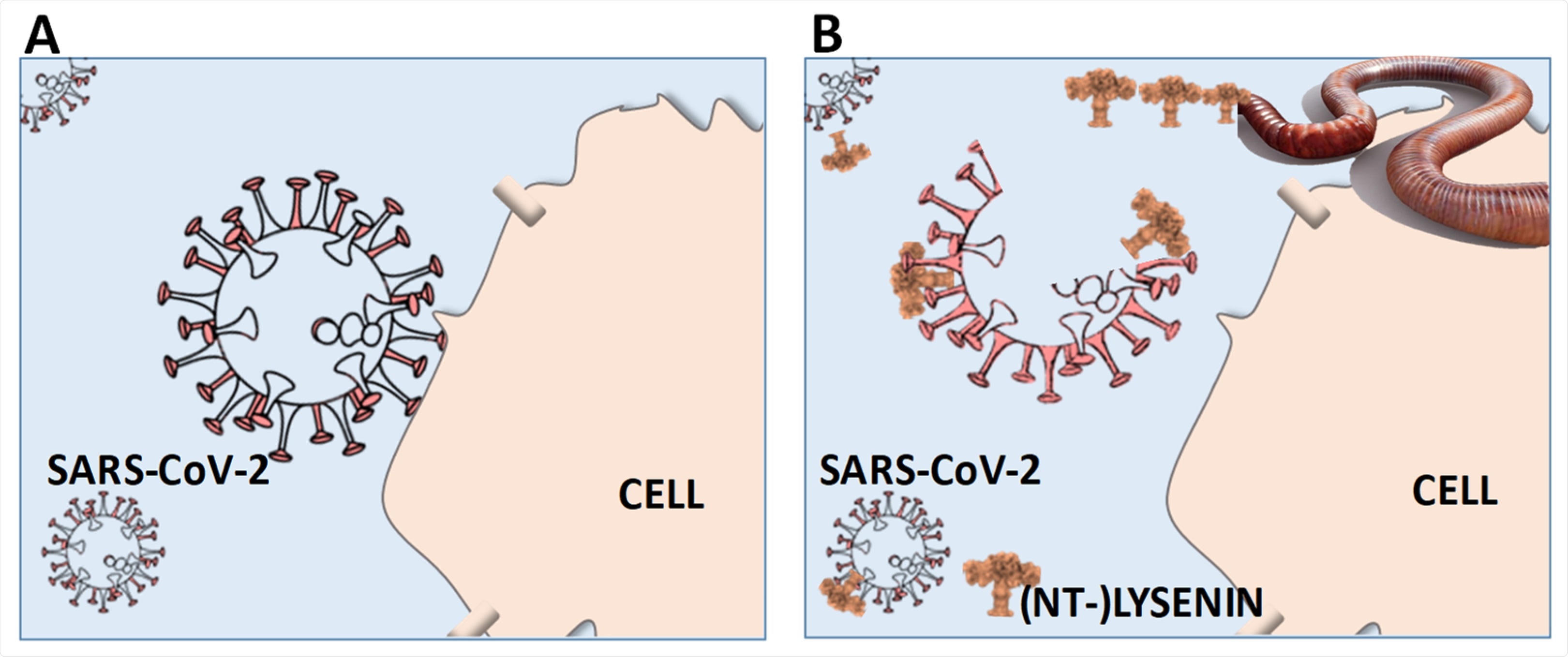Earthworm species are chosen for primary analysis in most biological studies as a result of their adaptability in the most adverse situations. Out of the many species studied, Eisenia fetida has developed a unique mechanism to deal with intruding (nano)materials, bacteria, and viruses.
Taken together, scientists and researchers were interested in further investigating the defense mechanism of earthworms to combat nanomaterials in an effort to discover possible therapeutic solutions for severe acute respiratory syndrome coronavirus 2 (SARS-CoV-2) infections.
Earthworms and COVID-19
Molecular microbiology has long established the fact that a weak point for enveloped viruses like SARS-CoV-2 may be the lipid layered envelope. The targeting of viral lipids or host lipids required for viral assembly represents an effective virucidal approach to develop new anti-viral drugs. Such targets include binding sphingolipids, which may interfere with the binding process of SARS-CoV-2 to the angiotensin-converting enzyme 2 (ACE-2) receptors on host cells.
Eisenia fetida has a well-known extracellular target defense mechanism involving pore-forming proteins (PFPs) like lysenin, fetidin, and eiseniapore that respond immediately to “foreign material” invading the worms. In particular, lysenin and fetidin bind strongly to sphingomyelin (SM), thus destabilizing the cell membranes and causing lysis. This process consists of PFPs like lysenin, forming three (inner)–10 (outer) nanometer (nm) wide pores in the invading material’s/organism’s membrane. Notably, SM is abundant in the SARS-CoV-2 envelope, which makes it a vulnerable target for lysenin and fetidin.
SARS-CoV-2 hijacks the target cells’ metabolic system, thus altering their lipid metabolism which allows for the production of lipid rafts needed by the virus for its formation and for replication, which, in some cases, contain substantial enrichment of the sphingolipids.
 Schematic (hypothetical) outline of the therapeutic potential of lysenin (-derivatives) to prevent or treat human SARS-CoV-2 (COVID-19) infections. (A) No action: SARS-CoV-2 enters the organism and attaches to the cell membranes, allowing the RNA injection and infection. (B) (NT-)lysenin administration: SARS-CoV-2 enters the organism and encounters lysenin, which binds to sphingomyelin in SARS-CoV-2 envelope (corona), forming pores and disrupting it, hence no cell membrane attachment and, thus, no infection. (NT-)LYSENIN: Non-Toxic-Lysenin: representation of a modified lysenin derivative.
Schematic (hypothetical) outline of the therapeutic potential of lysenin (-derivatives) to prevent or treat human SARS-CoV-2 (COVID-19) infections. (A) No action: SARS-CoV-2 enters the organism and attaches to the cell membranes, allowing the RNA injection and infection. (B) (NT-)lysenin administration: SARS-CoV-2 enters the organism and encounters lysenin, which binds to sphingomyelin in SARS-CoV-2 envelope (corona), forming pores and disrupting it, hence no cell membrane attachment and, thus, no infection. (NT-)LYSENIN: Non-Toxic-Lysenin: representation of a modified lysenin derivative.
Proof of SM being critical to the virulence of viruses like the human immunodeficiency virus (HIV), Influenza A, and the West Nile Virus are abundant from past research. Moreover, crude extracts of E. fetida tissues can inhibit their cytotoxicity by 69–100%. Hence, worms are unlikely to be infected by SARS-CoV-2 or other envelope-embedded viruses that require SM and sphingomyelinase activity for virulence and replication.
The earthworm avoids internal damage (self-destruction) by the PFPs because they are virtually devoid of SM. However, some human cell membranes also contain SM and raw PFPs; therefore, if injected into humans, PFPs may cause more harm than good.
A few biochemical modifications to these proteins can make them selectively harmful for the SM in the human body. Modifying the N-terminal can help in synthesizing a modified version of lysenin that is not toxic to human cells (NT-Lysenin) but that still selectively binds to SM clusters (5–6 SM) in membranes.
It is also possible to tag lysenin with polyhistidine, for example, or fluorescence tags to identify SM in membranes. Furthermore, it is also possible to modulate the action of lysenin-induced channels by interactions with multivalent inorganic and organic cations.
Further, for SARS-CoV and HIV, virus binding is both dependent on the lipid rafts (sphingomyelin and cholesterol) and the proteins in the cell membrane; hence, NT-lysenin may be used to study a possible reorganization of SM in the cell surface of the target cell and of SARS-CoV-2.
Since SM plays a unique role in determining cholesterol levels, combined with the fact and that higher cholesterol availability in membrane coincides with SARS-CoV-2 entry in host cells, studying this interaction would be helpful in devising therapeutic targets to prevent the binding of SARS-CoV-2 to human cells.
Conclusion
Thanks to all the research done on earthworms, it is now possible to emulate their defense mechanism against viruses and implement them therapeutically to prevent the binding of human cells to SARS-CoV-2. Developing SARS-CoV-2-related molecular traps by tagging lysenin modified to deliver drugs attached to their N-terminal is one potential therapeutic approach that can be further studied in the future.
Lyesin molecules can be targeted to specific tissues by linking them with gold nanoparticles, lipid- or polyethylene glycol (PEG)-carriers, as in the case of vaccines. Hence, more research on carriers and delivery mechanisms should be able to suggest methods to combat the infectivity of SARS-CoV-2.